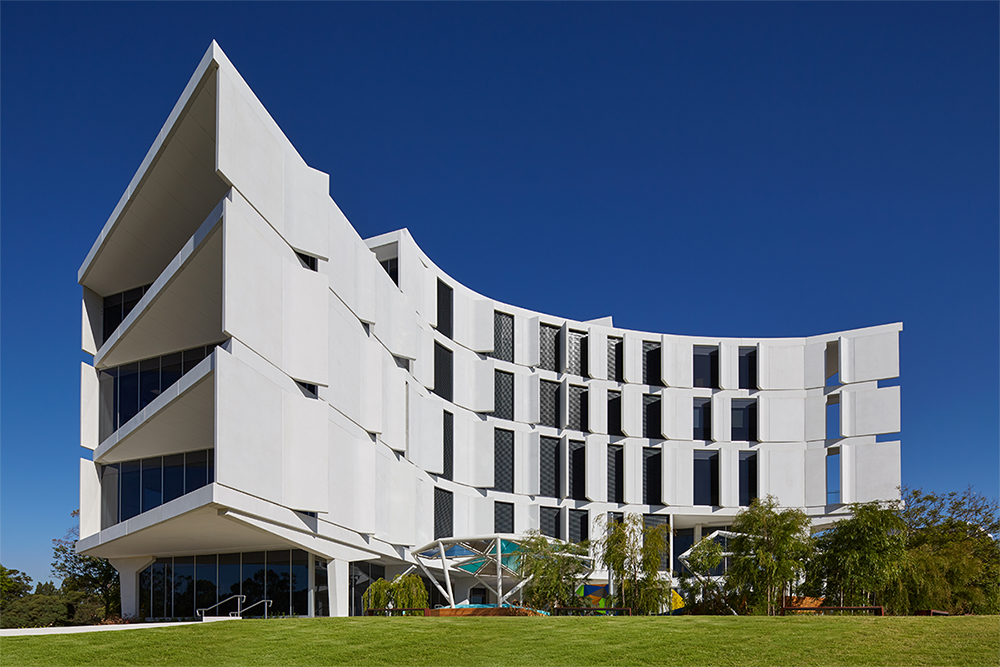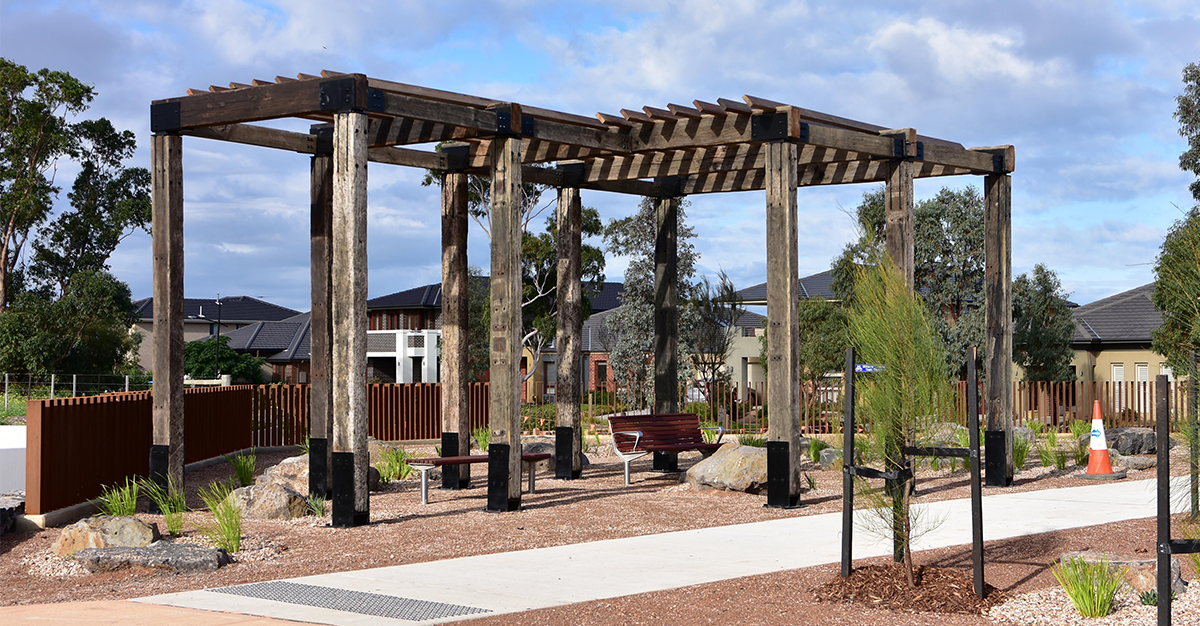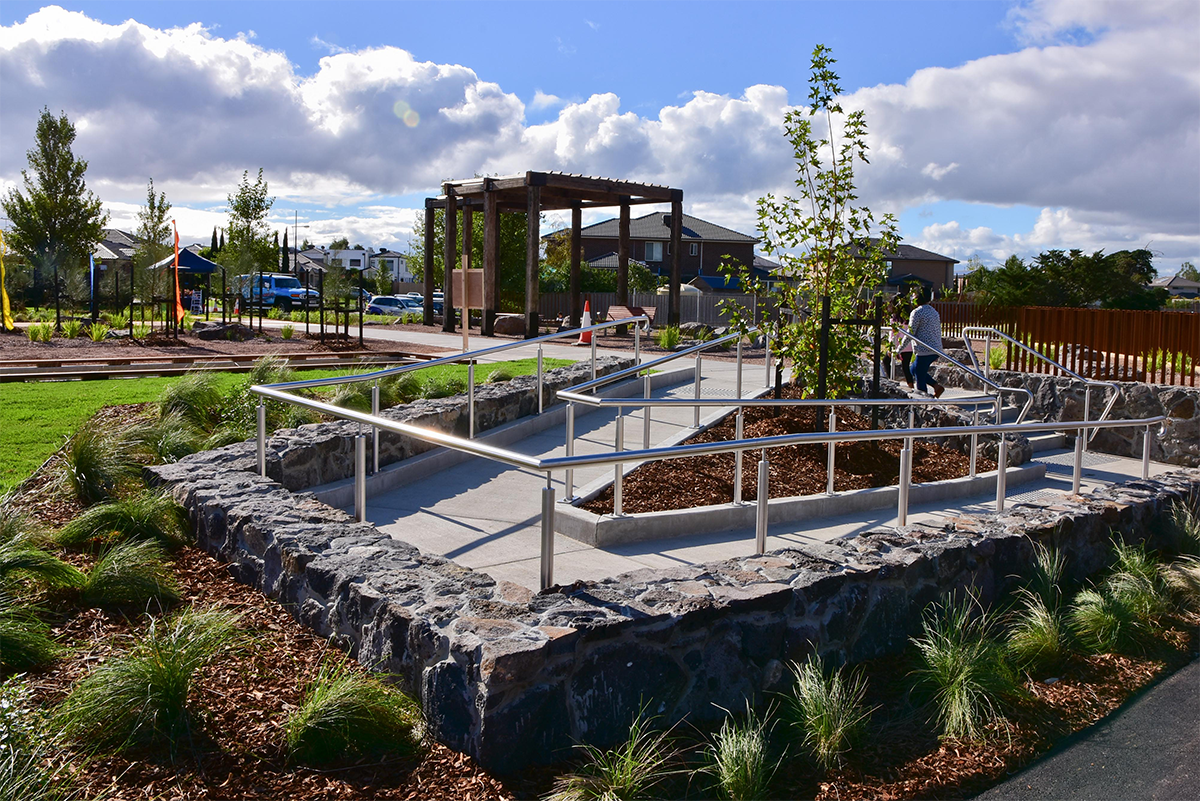GHDWoodhead

For multidisciplinary practice GHDWoodhead, growing the business is about strategic focus and working hard, with continued growth, global expansion and ongoing diversification the key ambitions.
Background
When was the practice established and what were its early ambitions? How has the practice evolved over time?
GHDWoodhead was formed in 2014 when the team from leading Australia-based architecture and interior design company Woodhead joined GHD’s already substantial international architecture, interior design and planning team. Woodhead was founded in Adelaide in 1928 and had grown to have studios across Australia and internationally.
GHDWoodhead is now ranked #3 in Australasia and #54 amongst global architectural practices in the World Architecture 100 2019 listing. GHDWoodhead is also ranked #9 among top global architecture practices for government projects. Our growth areas include transport facilities, urban precincts, education, health and hospitals, large hotels and industrial.
What is the company philosophy?
Our architecture arises from evidence-based design. It is therefore by nature place- and project-specific. We are an employee-owned business, which is a big differentiator from our competitors, and this informs our egalitarian culture and a design philosophy which enables each author of the design work to feel a sense of ownership leading to intelligent and cohesive project outcomes. Our core purpose is “Together with our clients, we create lasting community benefit”. As an integrated design practice, we are able to bring the A+E (Architecture plus Engineering) suite of services to help our clients deliver complex projects, tackle complex design challenges and truly shape cities.
Can you tell us about a key project or business initiative that provided a turning point in the life of the business?
Winning the Harry Seidler Award for Barwon Water HQ last year was a significant achievement because it represents acknowledgement by our architectural peers for the quality of the design our studios deliver. That project also won the AIA national architecture sustainability award and, more recently, the Property Council 2019 national workplace design award, as well as two state architecture awards in Victoria.
The client was originally considering demolition and re-build, and our project design director Martin Palmer convinced them that the existing buildings ‘had good bones’, resulting in us designing around the retention of the existing structure with minor interventions – this enables the embodied energy of the existing structure to be retained, which has huge environmental benefits. This approach creates huge opportunities for many other clients with C and D grade commercial buildings that could benefit from a cost-effective and environmentally responsible retrofit.
The Barwon Water HQ project exemplifies the value we can create through an integrated architecture and engineering offering. It demonstrates that adaptive reuse projects can create an environment that is just as attractive and engaging for the occupants as a new build, while delivering sustainability benefits and supporting the wider urban renewal process.

Barwon Water HQ. Photo: Trevor Mein
What is the background to the merger between GHD and Woodhead? How did it come about?
Founded in Melbourne in 1928, GHD has been active in the professional services business for more than 90 years. In 2014, GHD expanded its architecture, interior design and planning practice with the addition of the team from Woodhead. This followed over a decade of close collaboration between GHD and Woodhead. The team had worked closely on some of the largest projects in Australia for the Commonwealth Government including the Edinburgh Defence Precinct.
How does the architectural office operate within the larger multidisciplinary practice?
GHDWoodhead operates globally through the GHD network of studios and offices. Our architecture, interior, urban and landscape designers work side by side with engineers, scientists, economists, geologists – it’s a truly multidisciplinary practice. Importantly we encourage a best-for-project approach. Many of our clients procure the various disciplines separately, so some projects might be purely architectural in scope, but for others, we will draw on the vast in-house capabilities across disciplines to provide our clients with the right set of skills. For example, a new 28-storey five-star hotel we are designing in the Adelaide CBD has GHDWoodhead as lead architect and planners only, whereas the Williams Landing project in Melbourne included GHDWoodhead landscape architecture services as well as structural and water engineering provided by GHD.
What history, knowledge and experience did Woodhead bring to the business?
Woodhead focused on designing large projects for clients within defined market subsectors, such as healthcare, commercial/workplace, tertiary education, airports, hospitality, technology, research and industrial. We have now structured our architecture business nationally to provide a framework for us to focus on each of these sectors.
While GHD has had a substantial in-house architecture practice for a number of decades, it was primarily perceived as an engineering company in the marketplace. By creating a distinctive GHDWoodhead brand that builds on the history and experience of Woodhead, we have been able to really highlight our architectural capabilities and grow into one of the largest practices in Australasia.
What are the opportunities and challenges of working in a large multidisciplinary practice?
There are multiple in-house resources that a company the size of GHD has to offer that are the envy of many mid-size architecture practices, including in-house HR, legal, digital and research resources. There is also the ability very early on in projects to provide clients with very quick advice from other disciplines without having to commence their next stage procurement. The culture of design rigour that we engage in as architects has also helped bolster our engineering teams with a considerable growth in our GHD buildings engineering capability and depth in the last couple of years.
Being part of a connected global network, there are immense opportunities to collaborate with colleagues from around the world and contribute to projects in other countries. Our teams in Australia have worked on large projects in California, Abu Dhabi, Chile and the Philippines in the last couple of years.
GHD has around 10,000 people globally and the challenges that come with that size are making sure that people are truly engaged and feel part of a single practice, regardless of their physical location.

GHDWoodhead National Practice Leader Michael Hegarty.
Lessons Learned
What have been the biggest challenges and successes in recent years?
Challenges
We operate in the same challenging procurement context as all of our competitors, where our clients still procure to facilitate a very traditional model of practice while we are already restructured to the growing international norm of A+E. As we compete against many purely architectural practices, a constant focus for us is to demonstrate the benefits and value of the integrated services we offer.
Successes
We have grown our business year on year since 2014 to the point where we are now ranked #3 in Australasia and #9 globally for government projects in the WA100 2019 global architecture firm rankings. That represents year-on-year growth in both revenue and growth in numbers of architects employed. That is five years of sustained growth matched by growing industry recognition with multiple project wins, industry awards and more great people joining our studios.
We have hugely added to our New Zealand presence through the acquisition of the Creative Spaces architecture and design firm, now branded GHDWoodhead Creative Spaces. In parallel we established growing architecture studios in Hobart and Darwin, adding to our presence in Adelaide, Brisbane, Canberra, Melbourne, Perth and Sydney. We continue to work globally across the GHD network.
What are some of the key business lessons learned?
Growing a practice is about strategic focus and working hard. To paraphrase the champion golfers, “The harder we work, the luckier we get”.
Business
What are the biggest issues involved in running the practice in 2019?
While architects are being required to do more, some practices have responded by underpricing to win work and then aggressively pursuing variations. We find that our clients would rather know the real cost and are happy to pay for a good service.
The issues of running an architecture business are always the same – we need to win work, deliver the work well, get paid and reinvest. The challenges of competition haven’t changed, but the nature of competitors has changed – as practices stratify into larger multidisciplinary and smaller boutique specialists, the middle ground has fallen away.
How has technology impacted on how you conduct business?
There is very rapid technological change in architectural practice. Digital design is becoming essential to how we work and this involves significant changes to workflows so that we can share data effectively between architects and other disciplines, as well as between designers, contractors and clients. While there are significant business transformation efforts that we are pursuing, this change also requires all employees to evolve the way they work and to upskill themselves. Some clients are very advanced in digital design and others are still in the early stages, so there is also an element of supporting the latter in the transition and educating them about the benefits. Through our global GHD digital business we have considerable depth of resources in new technology that can help our clients.
How do you market the practice?
We focus on repeat clients and most of our marketing is inter-personal connections by our design leaders who are legible in the property marketplace. Our high quality project work sells our services.
Future
What are the ambitions for the practice?
We would like to expand into North America, Europe and the UK, as part of our continued growth and ongoing diversification.
Where do you see the business in the next five years?
I think we will continue to be one of the top three firms in Australasia and will grow globally.


Williams Landing. Photos: Peter Bennetts.
Top image: Curtin University Medical School Building in Perth. Photo: Douglas Mark Black.
